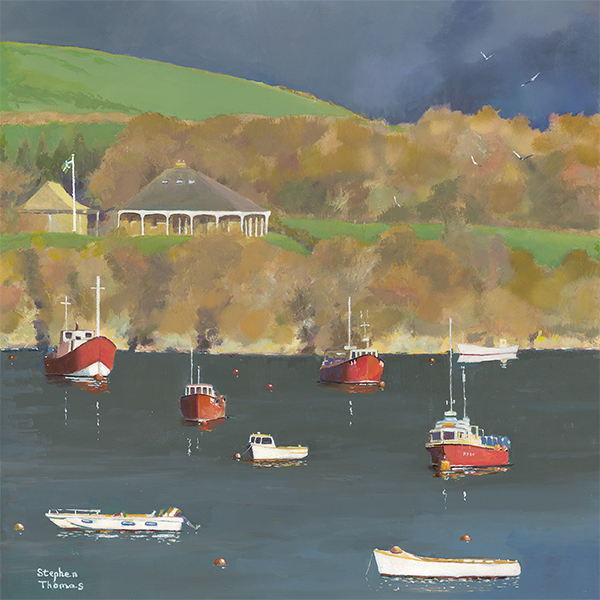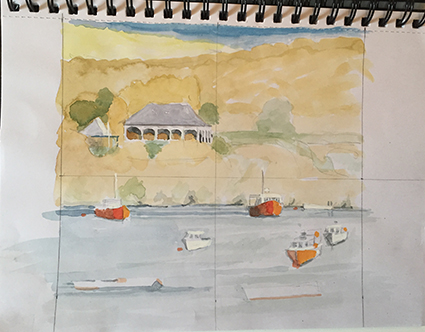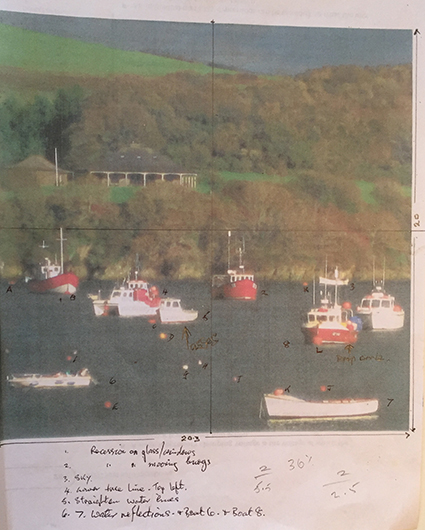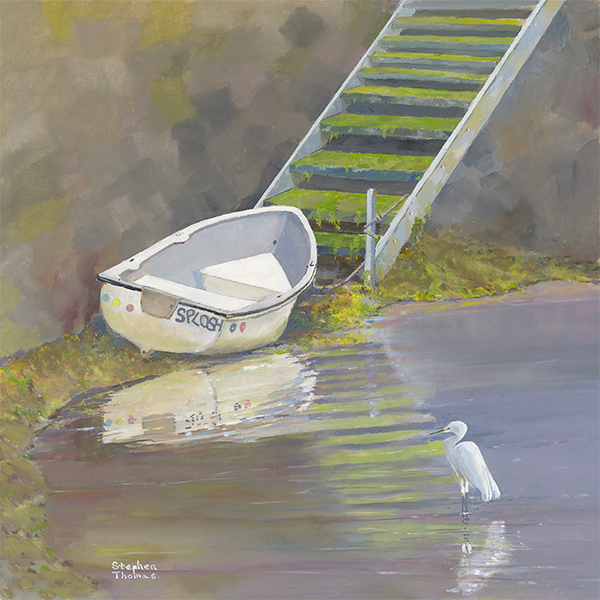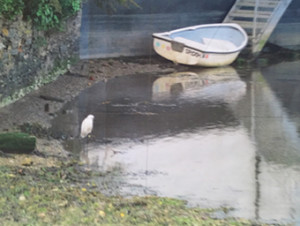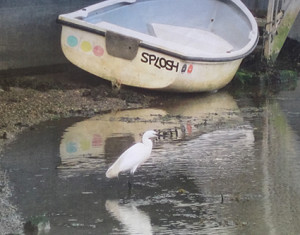Sketchbook Notes: Merlins Racing Past the Venus Cafe
Merlins are by far the most exciting craft to grace the Salcombe Estuary. The excitement – and the beauty – when they hoist their spinnakers is breath-taking, and their races always promise thrills and spills.
I take hundreds of photographs in any one year, and many of these are of the Merlins. These snaps are sure to provide inspiration for a painting; the tricky part is choosing which photo to use.
The year before last, I painted one image of Merlins (featured above) and it sold within days of going on show at the 2016 Salcombe Art Club Summer Exhibition.
So I had to paint another, and have actually done three!
Merlins Racing Past the Venus Cafe
This is the photo I chose as my main source of inspiration for Merlins Racing Past the Venus Cafe. The boats consist of horizontal lines (the hull) and strong vertical lines (the masts and sails) and I find this combination pleasing. The composition is not perfect but I feel I have captured the excitement of the race.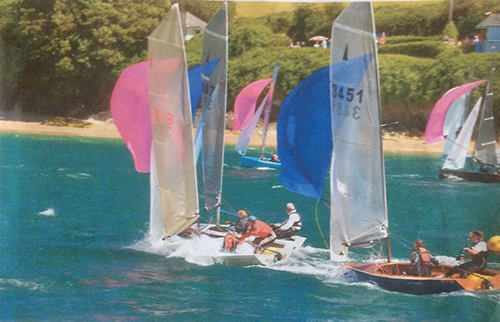
The next step is to create a sketch, deciding which elements of the photo to keep and which to lose, and applying ‘rules’ such as the rule of thirds. This is my sketch.
Notice that I have placed only those Merlins in the foreground and that they create movement from right to left. My shoreline is positioned just below centre, and I have scaled the boats so as to include their full height as best I can.
In drawing this sketch, it became clear that the closeness of the two boats on the left hand side would only lead to confusion. So, while this sketch provided the outline for the composition, I knew that when I moved to the painting stage, I would need to tweak the composition even more.
So, having done my preparation and having a clear idea in my head of the main features of this painting, I move to the next stage, and this is where I’m at right now.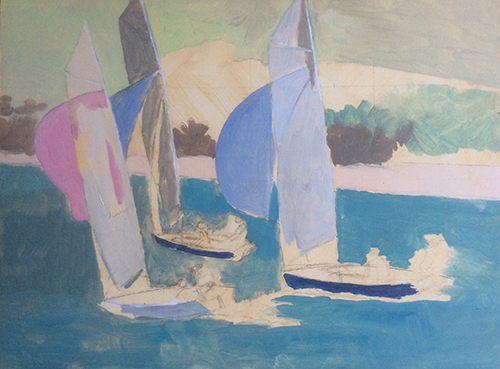
It was a sunny day, so I started with fairly pure colours and have yet to address shadows or indeed reflections in the water. I have also left the surface of the water and will at some point decide how rough to make it look.
I have also yet to decide whether to include additional craft, for example on the shoreline. Time will tell… I have much to think about before this painting is finished.
THE SKETCHBOOK NOTES SERIES
This is one of the Sketchbook Notes, a series of posts explaining what inspired me to produce a particular painting.
If you own one of my paintings, or are just curious about an image, let me know; I’ll then write a blog post especially for you!


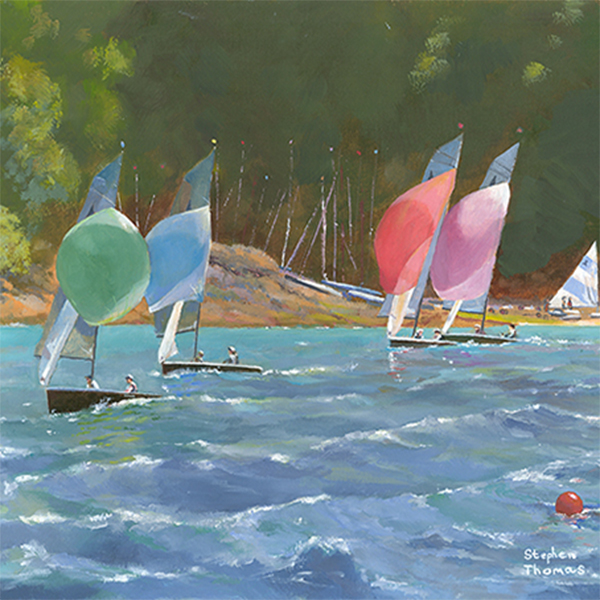
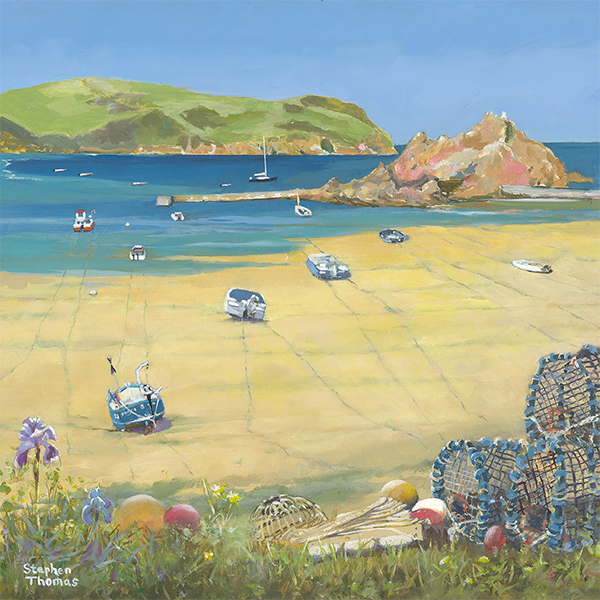
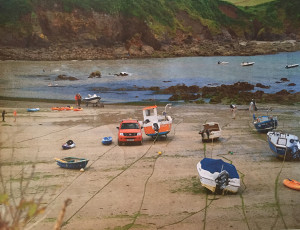
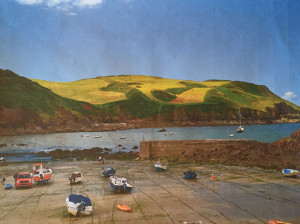
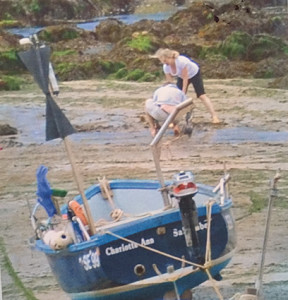
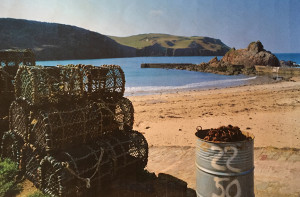
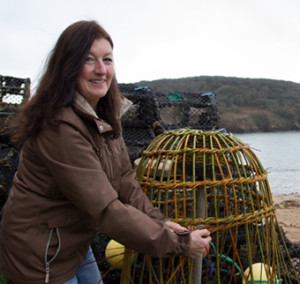 Crab pot maker: Sue Morgan
Crab pot maker: Sue Morgan